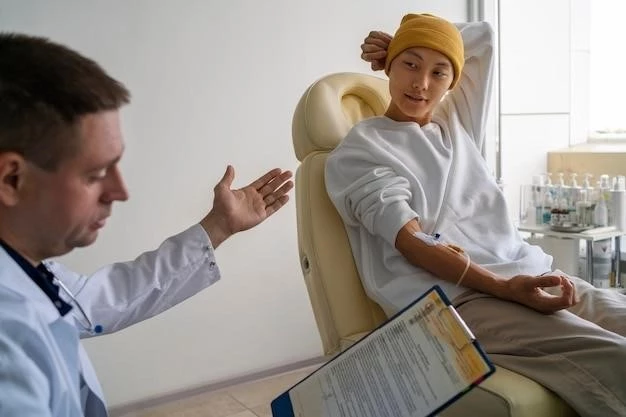Introduction to Nemaline Myopathy‚ Type 5
Nemaline myopathy (NM) is a congenital neuromuscular disorder characterized by muscle weakness‚ hypoventilation‚ and swallowing difficulties. The severity varies‚ impacting the face‚ neck‚ and limbs.
Nemaline myopathy is a neuromuscular disorder characterized by muscle weakness‚ hypoventilation‚ and swallowing difficulties. The presence of nemaline rods in muscle biopsies is a key feature. It is genetically heterogeneous‚ with mutations in various genes causing different types of the disease.
Overview of Nemaline Myopathy
Nemaline myopathy is a neuromuscular disorder affecting muscles‚ characterized by various symptoms like muscle weakness‚ hypoventilation‚ and swallowing difficulties. It is genetically heterogeneous‚ with mutations in multiple genes causing different types of the disease.
Mutations and Genetic Causes
Nemaline myopathy can be caused by mutations in at least 12 different genes‚ including NEB and ACTA1 which account for most cases. The presence of nemaline rods in muscle biopsies is a hallmark feature of the condition.
Historical Background of Nemaline Myopathy
Nemaline myopathy‚ also called rod myopathy‚ is a neuromuscular disorder identified by the presence of nemaline rods in muscle biopsies. The term ″nemaline myopathy″ was first suggested in the 1960s.
Discovery of Nemaline Bodies
Nemaline rods were first identified in muscle biopsies in the 1950s and 1960s from children with hypotonia. These rod-like structures were initially described as myogranules and later termed nemaline bodies.
Nemaline myopathy is categorized into six types‚ differing in severity from severe congenital to adult-onset‚ based on symptom onset and the level of symptom severity. Despite overlapping features‚ each type can present unique challenges.
Different Types and Severity Levels
Nemaline myopathy is classified into six types‚ ranging from severe congenital to adult-onset‚ each varying in symptom onset and severity. While there is overlap among the types‚ the differences in symptom presentation can pose distinct challenges for individuals affected by the condition.
Symptoms and Clinical Presentation
The symptoms of nemaline myopathy include muscle weakness‚ hypoventilation‚ swallowing issues‚ and impaired speech. Severity can vary with age affecting muscles differently.
Characteristic Signs of Nemaline Myopathy
Nemaline myopathy is characterized by muscle weakness‚ hypoventilation‚ swallowing difficulties‚ and impaired speech. The severity varies‚ impacting muscles differently across the body.
Diagnosis and Differential Diagnosis
Diagnosing nemaline myopathy involves muscle biopsy to identify nemaline bodies. Differential diagnoses may include other neuromuscular conditions with similar presentations.
Muscle Biopsy and Other Diagnostic Methods
The diagnosis of nemaline myopathy often involves a muscle biopsy to detect nemaline bodies. Other diagnostic methods may include genetic testing to identify mutations in specific genes associated with the condition. Differential diagnoses may include other neuromuscular disorders that present similar symptoms but lack the characteristic nemaline bodies.
Treatment and Management Approaches
Treatment for nemaline myopathy focuses on symptom management‚ including physical therapy‚ respiratory support‚ and feeding assistance. Management approaches aim to improve quality of life and functional abilities.
Therapeutic Strategies for Nemaline Myopathy
Therapeutic strategies for nemaline myopathy focus on symptom management through physical therapy‚ respiratory support‚ and feeding assistance. These approaches aim to enhance overall quality of life and improve functional abilities for individuals affected by the condition.
Prognosis and Life Expectancy
The prognosis for nemaline myopathy varies based on the type and severity of symptoms present. Life expectancy can range widely depending on the individual’s condition and the management approach taken.
Factors Affecting the Disease Outcome
The prognosis of nemaline myopathy is influenced by various factors such as the type and severity of the disease‚ age of symptom onset‚ individual response to treatment‚ and the presence of respiratory and feeding complications. A multidisciplinary approach to care and ongoing monitoring are crucial in managing the disease outcome.

Research and Advances in Nemaline Myopathy
Nemaline myopathy research is advancing‚ focusing on understanding the genetic causes‚ developing targeted therapies‚ and improving supportive care. Current studies aim to enhance treatment strategies and overall management for individuals living with this condition.
Current Studies and Future Directions
Current research on nemaline myopathy focuses on understanding genetic causes‚ developing targeted therapies‚ and improving supportive care. Advances aim to enhance treatment strategies and overall disease management to improve the quality of life for individuals with this condition.

Patient Support and Organizations
Patients with Nemaline Myopathy‚ Type 5 can benefit from support groups and organizations offering specialized care‚ advocacy‚ and resources to improve their quality of life and provide valuable assistance to families navigating the challenges of this condition.
Resources for Patients and Families
Patients and families affected by Nemaline Myopathy‚ Type 5 can benefit from various resources provided by support groups and organizations offering specialized care‚ advocacy‚ and valuable assistance in navigating the challenges of this condition. These resources can enhance the quality of life for individuals living with Nemaline Myopathy and provide support to their families during their journey with the disease.
Epidemiology and Prevalence
Nemaline myopathy‚ Type 5‚ has an estimated prevalence of 1 in 50‚000 live births worldwide. It is one of the most common forms of congenital myopathy with varying clinical presentations.
Global Incidence Rates of Nemaline Myopathy
The estimated prevalence of Nemaline myopathy‚ Type 5‚ is around 1 in 50‚000 live births globally. This condition is considered one of the more prevalent forms of congenital myopathy with varying clinical presentations.
Impact on Daily Life and Functioning
Nemaline myopathy‚ Type 5‚ can have a significant impact on daily life‚ affecting muscle function‚ movement‚ and overall quality of life. Individuals may face challenges with mobility‚ breathing‚ and basic activities‚ requiring specialized support and care to navigate daily tasks.
Challenges Faced by Individuals with Nemaline Myopathy
Individuals with Nemaline Myopathy‚ Type 5‚ encounter various challenges‚ including muscle weakness‚ decreased muscle tone‚ feeding difficulties‚ and limited mobility. Coping with daily activities and the impact on quality of life can present significant obstacles that require tailored support and assistance.
Conclusion and Future Perspectives
In conclusion‚ Nemaline Myopathy‚ Type 5‚ presents various challenges impacting daily life and functioning. As research progresses‚ the focus is on understanding genetic causes and improving management to enhance the quality of life for individuals affected by this condition.
Summary of Key Points on Nemaline Myopathy‚ Type 5
Nemaline Myopathy‚ Type 5‚ is a genetically heterogeneous disorder characterized by muscle weakness‚ hypoventilation‚ swallowing difficulties‚ and the presence of nemaline bodies. The disease manifests differently depending on the type and severity‚ impacting individuals’ daily lives and requiring specialized care. Research aims to improve understanding of genetic causes and enhance management approaches to enhance the quality of life for affected individuals.
